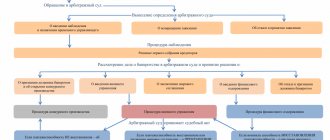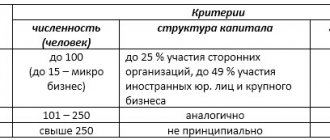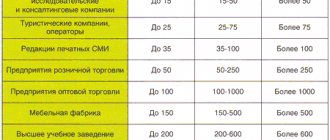What is money
The term "money" originates from the Turkic word "tenge"
, which denoted local money (and is now called the national currency of Kazakhstan). Money is considered as a universal equivalent used to assess the cost of services, work, and goods. Money is used for mutual settlements between individuals, business entities, and states.
In ancient times, people made payments among themselves with goods, which used animal skins, precious stones, livestock, etc. Commodity exchange was replaced by silver and gold bars
, from which coins were subsequently made. Due to the ease of storage, light weight and high cost, such money quickly replaced other goods from circulation. Over time, paper banknotes began to appear, followed by other types of money.
After that, money began to circulate separately from goods, people were able to make savings, which they spent as needed (for example, purchasing goods, issuing loans, paying for services). As social progress progressed, money, which had its own value, began to be replaced by banknotes
, thanks to the turnover of which it became possible to issue them without reference to gold collateral.
Types of money
- Commodity money
Commodity money is a unit of account that has real value. First of all, these are gold, silver and even copper coins.
- Paper money
Paper money. The cost of such banknotes is several times less than their face value. That is why only the state can issue banknotes and their counterfeiting is strictly punishable by law.
- Credit funds
Credit funds are primarily financial obligations based on various agreements, such as bills, checks, bonds, electronic money, etc.
What are the functions of money?
Today, literally everything is tied to money: they use it to make savings, determine the cost of certain goods, works and services, and lend money (often receiving passive income in the form of interest). Today, the labor and intellectual abilities of people, natural resources are valued in monetary terms. It follows from this that money is able to perform its functions only with the participation of people, and they are as follows:
- Measure of value. The assessment of work, goods, services - when expressed in money is called price. This indicator, in relation to cost, can move up and down, since it is directly influenced by market offers and the state of consumer demand.
- Means of circulation. In transactions of purchase and sale of goods, works and services, money acts as an “intermediary”. With their help, liquidity is determined, so indicators such as speed and ease of circulation are extremely important.
- Means of payment. The active development of credit relations in all countries of the world has led to the fact that money has a new function - with its help, loans are repaid, it is possible to defer debt repayment, payroll payments are made, etc.
- A means of storage. If money is not involved in circulation, then people save it in order to use it for its intended purpose in the future. When creating savings, you should remember the phenomenon of inflation, which can reduce the purchasing power of money. Economists recommend using money in the form of securities, gold, real estate or foreign currency as an object of savings.
Money on a global scale is a direct participant in relationships
between individuals, legal entities, states and other economic entities. Until the end of the 19th century, gold (ingots and coins), precious stones and other precious metals were used as world money. Since the 20th century, in the relationships between economic entities, the most stable and quoted foreign currencies are most often used, which include the American dollar, euro, British pound sterling, and Japanese yen.
When producing money, there are special requirements:
- High level of security. Reliable protection against counterfeiting, in particular, increasing the denomination, and copying.
- Safety. During long-term storage and active use, money must retain its appearance and physical properties.
- Money must be quickly identified.
- All bills and coins of the same denomination should not have unique properties.
The essence of the concept
Money is a special type of commodity that plays the role of a universal equivalent for any other goods. Money is very important in a market economy; in its absence, it is impossible to carry out market exchange. They are a universal equivalent that can be easily exchanged for any other goods. At the same time, the specificity of money lies in its absolute liquidity, that is, the highest speed and ease of its exchange for other assets.
Money has a certain value. There are several types of their cost:
- Real (internal). It is the cost of emission (issue) of money and includes expenses for production and materials;
- Representative. Displays the degree of confidence of people in the funds themselves and their issuer (in fact, it is considered the market rate);
- Nominal. It is indicated on banknotes and is their denomination. When the nominal value is equal to the real value, the money is considered valid. If the nominal price is lower than the real price - inferior.
Money has the following main characteristics:
- They are used as a tool in the exchange of goods and services.
- They measure the value, that is, the price of any item being sold.
- Used as a measure of labor and the value of goods and services produced.
Money must have certain properties, and only those values that correspond to all of them can have the status of money. The main requirements for monetary material are:
| Property | A comment |
| Uniformity of quality | All copies are issued identically (for example, all 1 ruble coins are identical) |
| Strength | The monetary material must have sufficient strength to remain in circulation for a long time without losing its shape. Now coins are minted from durable metal alloys. Banknotes are printed on special paper that is resistant to abrasion and bending |
| Storability | Long-term storage should not lead to loss of physicochemical and other properties |
| Unitability and divisibility | Money should be easily exchanged or combined into larger denominations |
| Compactness | A small amount of money should have a fairly high value |
| Recognition | Cash must be quick and easy to determine its denomination |
| High degree of security | There must be protection against counterfeiting, theft, etc. |
What kind of money is there?
Money has many varieties, subspecies; they differ from each other not only in the way of use, circulation, type of material, but also in the possibility of transformation into each other, taking into account the money supply. Economists distinguish 4 types from the whole variety:
- Commodity. They have independent value and include all types of goods that were used as a monetary equivalent in settlements, and metal coins.
- Secured. They are presented for exchange for a specific amount of commodity money or gold or other precious metals.
- Fiat. They perform the functions of money, although they themselves do not have independent value. This category includes non-cash funds in bank accounts and banknotes.
- Credit. This type of money represents specially issued debt obligations, rights of claim against citizens and legal entities. Most often they take the form of securities, which are used to pay off debts, pay for goods, services, and work.
Money can be valuable
(metal, commercial) and
defective
. In the first case, they have real commodity value. Thanks to this, their adequate purchasing power is formed, determined by the conditions of reproduction. The second group includes secured and unsecured money that does not have a commodity value.
Citizens of different countries have cash in their hands. People use them for purchases, savings, and various settlement and payment transactions. Metal coins and paper bills are passed from hand to hand. Despite the continuing popularity of cash, the bulk of the money supply is accumulated in bank accounts
, which are credit and deposit.
What functions does money perform in the economy?
This tool is used to determine the value of commodity resources that are part of the economic life of society. Thanks to absolute liquidity, currency plays the role of the foundation of the economic system of each state. Any type of money in our time represents a universal measure of the cost of products and services. The essence of this means of payment is revealed in its five functions:
- Measure of value. Used to express the prices of all goods and services that are comparable qualitatively and identical quantitatively.
- Instrument of payment. The function is performed when receiving goods on credit, paying utilities, taxes and paying salaries.
- Means of circulation. They allow you to simplify the process of exchanging and receiving products.
- A means of accumulation and savings. The most convenient form of storing wealth due to high liquidity.
In some sources, the properties of money include its access to the international market. Global money becomes global when it participates in the circulation of finances between several states. Money used to maintain international economic relations is called currency. It can be foreign and state. The dollar and euro are very popular in Russia among foreign currencies due to the high exchange rate. Foreign money includes:
- funds in accounts in monetary units of foreign countries and in international monetary units;
- banknotes in the form of coins and banknotes that are legal tender of any state and are currently in circulation.
What are the different forms of money?
Money is classified not only by type, but also by form:
- Metal. Their nominal and real values correspond to each other. Initially, precious metals were used for payments between people, since they were widespread, divisible, and of great value. The first coins were invented around the end of the 7th century BC, in Asia Minor. They became a universal means of payment, which was used by many civilizations of the Old World. Each state, in order to demonstrate its sovereignty, began to mint its own coins.
- Deposit. They are numeric entries that are displayed across customer bank accounts. They are monetary capital and at the same time perform the functions of a means of payment.
- Paper. They replaced gold coins. They are deprived of independent value, but at the same time they are supplied with a compulsory exchange rate by the state.
- Credit. They act as debt obligations that must be repaid within a specified period. They do not have their own value; they are issued by banks if they are needed to ensure cash flow.
- Cashless. Records of bank accounts that are not a means of payment, but are capable of being converted into cash. Non-cash money is guaranteed by credit institutions.
- Banknotes. A type of credit money, issued by the Central Bank of the state, is not always backed by goods, is not exchangeable for gold, and has a specific value.
- Bills of exchange. They are the first type of credit money; they represent an unconditional obligation of the debtor, drawn up in writing, for a specific amount, concluded in a certain place for a specified period.
- Electronic money. They appeared at the end of the 20th century and immediately entered almost all economic spheres. They are monetary obligations of issuers, issued in electronic form. Are at the user's disposal and stored on electronic media.
- Checks. They serve as a tool for obtaining funds from the bank. Used for non-cash payments. They can act as a means of payment and cash (contain an order from the owner to pay the bearer a specified amount).
Types of money
In history and modern times, there are different types of money. They can be combined into 3 large groups that existed previously and continue to exist today. But over time, these types branched into species and subspecies. The appearance of cryptocurrency alone is worth something.
Commodity
The first type is commodity money or natural, real, valid, full-fledged. Their nominal value is equal to their real value. In ancient times, these were gold and silver, furs, pearls, livestock and other valuable property, recognized as such by all participants in the trading process.
Their peculiarity is that they not only acted as an equivalent to the value of other goods, but also satisfied certain human needs and also had utility. For example, furs kept people warm in winter, pearls determined a person’s status in society and served as decoration, and grain fed people.
Today there is practically no commodity money left. Only some precious coins that the Central Bank issues from time to time. But older people remember the time when wages were paid in enterprise products (building materials, fabric and other goods). Sometimes an exchange was made between employees of different enterprises if it was not possible to profitably sell the goods received in the form of wages.
In the 90s, my university colleague worked in a company that dealt with computerization in industrial enterprises. One day they were given an Ivanovets truck crane for work. Or another example. In 2000, my husband was given a trip to a sanatorium in the city of Sochi in exchange for his services in setting up medical equipment there that his company produced. This was our honeymoon.
Secured
They appeared when it became unsafe and inconvenient to carry gold or silver coins with you. They were replaced with certificates, banknotes, which confirmed that the owner had the number of coins indicated on the paper. The existing “gold standard” system made it possible to exchange pieces of paper for gold at any time.
But not only banknotes were considered secured money. For example, animal figurines made it possible to exchange them for real ones if necessary.
After the abolition of the gold standard, backed money became fiat or fiat money.
Unsecured or fiat
Fiat or fake, unbacked, inferior, substitutes for real money. Their nominal value is higher than their real value. They have no value, and the guarantee of exchange for a product or service is given by the state. First of all, fiat money includes paper and non-cash money.
Such money can depreciate at any time. For example, if the state increases the volume of issue of unsecured banknotes. And this, in turn, will provoke an increase in inflation. Or the population will lose confidence in the government and begin to exchange the national currency for foreign ones. An unfavorable international situation or a global economic crisis may also contribute to depreciation.
Credit
Credit money is a special type with the help of which a debt is issued to an individual or legal entity. The advantage of this form of payment is that a person or organization receives goods and services now, but pays for them later. The main types of credit money: checks and bills, bonds. Characteristic features are:
- urgency, i.e. the debt is repaid after a certain period, but sometimes it happens at the first request of the creditor;
- repayment - the loan is necessarily repaid to the person who issued it, or to anyone who bought the rights of claim;
- payment – the borrower repays the debt in full, plus pays remuneration (interest, coupons) to the lender.
What is money for?
Money plays an important role in the life of every person. With their help you can buy everything you need for a comfortable life.
. Thanks to money, it will be possible to realize many dreams and bring various projects to life. But, despite the freedom they give people, their presence is not a guarantee of happiness.
When a person has the opportunity to spend money without restrictions, he gains the feeling and confidence that everything is under his control, that the world around him is filled with energy. Today, money and people are subordinate to each other, and if humanity suddenly abandons money, then the world will face complete collapse in all areas.
People are in dire need of real intangible and tangible values
, which can only be obtained if you have money. This list can include housing, clothing, food, water, health care, payment for treatment, and education. In addition to the needs of life, each person has his own innermost desires, which money can realize. The higher people set the bar for themselves, the harder they will begin to work towards achieving their goals. They will have a meaning in life, and satisfaction from each achievement will lift their spirits. Lack of desires will lead to depression, against which illnesses appear, and the desire to live will disappear.
Having money gives people freedom of choice. They can independently decide how to spend their leisure time, where to relax, what to wear.
. With their help, they will be able to satisfy their natural needs and desires. Today, money is needed in all areas, it is almost impossible to exist without it, so every person should strive to gain freedom, which will be determined by the amount of money earned.
How to increase money (capital)?
There are a large number of different earning schemes. Today we will discuss universal options that do not require financial investment.
- Selling a service. If you have already reached the age of majority, you can offer your skills to potential consumers. Think about what skills of yours people would be willing to pay for? You can, for example, knit to order, teach a foreign language to schoolchildren, work part-time as a waiter in a cafe, etc.
- Working on the Internet. Almost every person, if desired, can provide themselves with an income by wisely using the capabilities of modern technologies. You can work remotely as a freelancer, fulfilling orders for money for writing texts, translating from foreign languages, or transcribing audio recordings. You can also use the Internet space to build an online business.
- Selling goods through websites with private advertisements. Feel free to offer your services as an intermediary to friends and acquaintances. The system is extremely simple: your task is to create and place an advertisement for the sale of this or that item by your client, negotiate with a potential buyer and transfer it to the “warm” seller, and receive a commission from him for the transaction.
And these are just a few of the options available to beginners. Understand the main thing - everyone can increase their income, sometimes even without leaving their main job. The main thing here is to decide what skills and abilities you have that can be in demand and paid accordingly.
That's all, I wish you prosperity and financial well-being!
Interesting Facts
The first metal coins began to be minted about 2,500 years ago in Asia Minor
, and paper began to be made over 1,000 years ago in China. For the first time, the image of a living person was printed on a coin in Ancient Rome. The largest banknote printed was 100,000 US dollars. A gold certificate for this amount was issued in 1934. One of the most expensive coins is the “Liberty Head” minted in 1913.
The largest banknote by denomination is 100 trillion Zimbabwean dollars
, coin – 100,000 Turkish liras.
Modern credit money
Commercial organizations not only act as intermediaries in transactions, but also provide financial assistance to the population. It is difficult not to mention credit means of payment when considering what types of money exist in our time. In short, they are debt obligations that must be realized within a specified time frame. These include:
- checks;
- bills;
- banknotes.
Bills of exchange
This security is issued in the form of a promissory note in writing. The essence of the document is simple. The debtor undertakes to pay the amount specified in it to the recipient of the bill, but strictly on a specific date and in a specified place. A bill of exchange can be one of 4 types - bank, treasury, simple or transferable. The main feature is servicing mostly wholesale trade. Repayment of the balance of mutual claims is carried out by paying out cash.
Banknotes
All credit funds are issued by the country's central banks. Initially, such money was doubly guaranteed - it had a commercial and gold guarantee. The main difference between a banknote and a bill of exchange is that it has a perpetual form, that is, it is valid for an unlimited period of time. Nuances:
- The provision function lies with the country's central bank.
- During the development of banknotes, they lost two types of security at once.
- Today, banknotes come into circulation in several ways - by exchanging foreign money for banknotes of their own country, through commercial banks or state financial and credit institutions.
- They are used in various fields of human activity, and do not belong to a special currency.
Checks
This document is an order from the owner of the bank account to transfer a certain amount to the bearer of the check. For full check circulation, an agreement is drawn up between the lender and the client, which stipulates the total amount of the loan provided. All checks differ in their characteristics and come in several types: personal, order and bearer. The latter type can be brought to the bank to get money.
Social functions of money
Behavioral function
Money is a means of determining human behavior because it is the equivalent of everything that a person needs to live. They shape desires, ways of thinking, lifestyle and consumption. They become an absolute value, an object of desire, which does not always lead to positive phenomena (for example, greed, stinginess, bribery, etc.).
Motivational function
The desire to have money motivates people to take action to obtain it. These actions can be twofold:
- socially recognized - honest work for appropriate remuneration;
- dishonest - paid murders, human trafficking, corruption, etc. due to the desire to get rich quickly.
This feature is widely used by employers to encourage employees to work efficiently.
Information (communication) function
Money is a source of information about the economic situation of the state that issues it. In turn, the appearance, execution technique and material from which the money was made inform about the level of culture of a given society. Wages reflect the employee’s efforts and time, their contribution to socio-economic development.
Disintegrative function
Money causes the collapse of social structures and the formation of new ones. The desire to get rich causes many differences between social groups. There is a stratification of society in terms of the amount of money available, therefore, power, influence, fame, etc. The temptation to earn money at any cost contributes to the development of crime. Funds from illegal activities brought into government circulation adversely affect the financial stability of the state.
Integrative-institutional function
Money influences the emergence and formation of relationships between people. On their basis, social and financial institutions arise (banks, exchanges, funds, insurance companies), which have the task of meeting social needs. Money is also an effective tool to control the activities of these institutions.
Basic Types and Forms of Money - if we were there, there would be money
All modern monetary systems are based on fiat money, but historically there are four main types of money:
- Commodity money (also called: real , natural , real , real , primitive money);
- Secured money (also called: change money , representative money );
- Fiat money (also called: symbolic , paper , decreed , fake );
- Credit money.
Electronic money
Electronic money is very popular today. They are easy to use, cheap to maintain, and almost impossible to steal or counterfeit. They reduce financial crime. Economists believe that in a few years electronic money will be able to replace not only cash, but also credit cards.
2 forms of electronic money:
Smart cards (electronic wallets) are a kind of credit cards, but bypassing banking intermediation.
Network money is software through which you can transfer money over the Internet.
Properties of electronic money:
- convenience;
- stability;
- integrity;
- durability;
- divisibility;
- recognition;
- uniformity;
- acceptability.
- 1.1. Concept and functions of money
- 1.2. Types of money. The main stages of the evolution of money
- 1.3. Forms of issuing money. The impact of money emission on price inflation
1. The essence and types of money
1.1. Concept and functions of money
Money
- a specific product that has become a universal equivalent. Money performs five functions: a measure of value, a medium of circulation, a means of payment, a means of accumulation and savings, and world money.
Measure of value
. Money as a universal equivalent measures the value of all goods. What makes commodities comparable is the socially necessary labor spent on their production. The socially necessary labor contained in a product is determined in production through the comparison of goods with each other until the moment of their sale. Money acts as the materialization of universal labor time contained in a commodity.
Medium of exchange
. In contrast to the first function, when goods are ideally valued in money before their circulation begins, money must be really present during the circulation of goods. Commodity circulation includes the sale of goods and subsequent purchase. In this case, money plays the role of an intermediary in the exchange process. The functioning of money as a means of circulation creates conditions for overcoming individual time and spatial boundaries characteristic of the direct exchange of goods for goods. Money is constantly in exchange and continuously serves it. The fleeting nature of their participation in exchange leads to the fact that the function of a medium of circulation can be performed by inferior money - paper and credit.
Instrument of payment
. As a result of a lack of funds, the need arises for the purchase and sale of goods with payment in installments, i.e. on credit. With such an exchange, there is no counter movement of money and goods. Repayment of the debt obligation is the final link in the purchase and sale process. Money serves a variety of payment relationships, including labor ones.
Store of value
. The creation of cash reserves at an enterprise ensures the smoothing out of emerging disturbances in an individual business entity, and reserves on a national scale eliminate imbalances in the economy. The size of the gold reserve indicates the wealth of the country and ensures confidence in the national currency. To perform this function, money must have the ability to store value over a certain period. Credit money is paper symbols and does not create real wealth for the owners. It is not profitable to store money; it is put into circulation to make a profit. It is possible to store gold in the form of bars, coins, jewelry; storing money in credit institutions and using securities.
World money functions in foreign economic settlements, provision of international loans and subsidies. The function of world money makes possible the flow of capital between countries.
1.2. Types of money. The main stages of the evolution of money
Money in its development came in two forms: real money and signs of value.
Real money is money whose nominal value (the value indicated on it) corresponds to the real value, i.e., the value of the metal from which it is made. In bimetallism, the role of universal equivalent was assigned to two noble metals (gold and silver). At the end of the 19th century, bimetallism gave way to monometallism - a monetary system in which one metal (gold or silver) served as the basis of monetary circulation.
Gold circulation existed in the world until the First World War. Reasons for demonetization of gold:
1. Gold mining has not kept pace with the production of goods.
2. The gold standard generally did not stimulate production and trade turnover.
3. Gold money could not serve the small turnover.
4. Gold circulation did not have the ability to quickly expand and contract (elasticity).
Signs of value are money whose nominal value is higher than the real value. These include:
– metal signs of value – small coins made of cheap metals;
– paper signs of value – paper money and credit money.
Change coins are minted by the treasury from cheap metals. The real value of coins is much lower than the nominal value. Represents a small share of cash (2–3%).
Paper money (treasury notes) is issued by the state treasury to cover the budget deficit, is not exchangeable for gold and is endowed with a forced exchange rate by the state. The difference between the nominal value of the issued money and the cost of its issue forms the treasury's share premium. Initially, paper money performed two functions: a medium of circulation and a means of payment. In developed countries, treasury notes are generally not issued.
The emergence of credit money is associated with the function of money as a means of payment. They have gone through the following development path: bill, banknote, check, electronic money, credit cards.
A promissory note is a written unconditional obligation of the debtor to pay a certain amount within a pre-agreed period. The bill is characterized by the following features:
– abstractness – absence of information on the document about the type of transaction;
– indisputability, meaning obligatory payment of the bill. The payment guarantee increases even more when the bill is accepted by the bank;
– negotiability, i.e. the possibility of transferring a bill of exchange as a means of payment to other creditors, which creates the possibility of mutual offset of bill obligations. The use of bills of exchange is limited to wholesale trade. Secondly, the balance of mutual claims is settled in cash. Thirdly, a limited circle of persons who are confident in the solvency of the drawer and endorsers are involved in bill circulation.
Banknotes (bank notes) appeared as a form of bank lending to the state, were associated with trade turnover and were exchanged for gold. Currently, there is no material backing for banknotes in the form of goods or gold. After the abolition of the gold standard, the differences between treasury notes and banknotes were practically erased. Essentially, banknotes are national money on the territory of the state.
A check is a monetary document of the established form containing an unconditional order from the account holder at a credit institution to pay the holder of the check a specified amount.
Credit cards are issued by credit institutions on the basis of the client's account in the form of a plastic card with a built-in microchip. They are used in retail trade and the service sector (banking, shopping, cards for purchasing gasoline and paying for tourism and entertainment events) as a means of payment, and also allowing the owner to obtain a short-term loan from the bank.
Electronic money is a system that, through the transmission of electronic signals without the participation of paper media, carries out credit and payment transactions. The electronic payment system represents a transition to a qualitatively new stage in the evolution of the monetary economy.
In the Russian Federation, the types of money that are legal tender are bank notes (banknotes) and metal coins. They are backed by the assets of the Central Bank of the Russian Federation.
1.3. Forms of issuing money. The impact of money emission on price inflation
Emission
– the release of money into circulation, which leads to a general increase in the money supply in circulation (money supply is the totality of cash and non-cash money in accounts, deposits, certificates, bonds). Issues can be cash or non-cash (4/5).
Issuing operations (for the issuance and withdrawal of money from circulation) throughout the world can be carried out by: 1) a central bank that enjoys the monopoly right to issue bank notes (banknotes), which make up the overwhelming majority of cash circulation;
2) the treasury (the Ministry of Finance or another similar executive body), which issues paper banknotes (treasury notes) and coins made from cheap types of metal.
In the Russian Federation, the exclusive right to issue cash, organize it and withdraw it from circulation belongs to the Central Bank of the Russian Federation.
The issue of banknotes (cash) is associated with cash services in the production and service sectors: commercial banks, the state budget, public debt, when it is necessary to increase the cash reserve of cash. The issue of banknotes is carried out by the central bank of the country in the process of lending to commercial banks, the state, in the process of operations related to the purchase of foreign currency and government securities. Paper money and credit money are issued as bank notes, so there is no clear line between them.
In economically developed countries, 95% of all money turnover is made up of non-cash payments. Therefore, the increase in the money supply in circulation occurs mainly not due to the issue of banknotes (cash), but due to the issue of deposit checks. It means an increase in deposits in customer accounts and, accordingly, in the mass of checks servicing the payment turnover. Deposit-check emission in Russia is carried out in the process of lending by the Central Bank of Russia to commercial banks.
The state, constantly experiencing a shortage of funds, increases the issue of paper money without taking into account commodity and payment turnover.
The economic nature of paper money excludes the possibility of stability of paper money circulation, since its issue is not regulated by the needs of trade turnover, and there is no mechanism for automatically withdrawing excess paper money from circulation. As a result, paper money, stuck in circulation regardless of trade turnover, overwhelms circulation channels and depreciates. Emissions without taking into account the real cost of goods produced and services provided in the country inevitably cause their surplus and lead to the depreciation of the monetary unit (Fig. 1). The main condition for the stability of a monetary unit is the correspondence of the economy’s need for money to its actual receipt in cash and non-cash circulation. Rice.
1 The impact of money emission on price inflation The figure shows that an increase in the supply of money in the economy leads to a decrease in the interest rate on deposits. This situation is currently typical for the Russian economy. The money demand curve is downward sloping, reflecting the tendency of people to increase their holdings of cash when interest rates fall.
Table of contents
The origin of the word “money” (etymology) - there wasn’t a penny, but suddenly Altyn
According to the most common version, the Russian word “money” comes from the Turkic “tenge” or from the Khazar “Tamga” - “brand”, “stamp”, “seal”.
Tenge (danek in Arab countries; dangkh in Persia; tanka, tangka or tanga in India, Ceylon, Tibet and Nepal; tanga or tenga in the Khiva and Kokand khanates, in the Bukhara Emirate) - initially a small silver and then a copper coin in the countries of the East. In Ancient Greece and Persia, these coins were called danaka (Greek Δανακη; Persian danaka) and Greek obol.
In “Walking across the Three Seas” by Afanasy Nikitin (XV century), Indian and Chinese money are called tenka , tenki, for example, “and a white child will be born, otherwise the guest will pay 300 teneks”, “A bud of a diamond from a new mine is five kenyas, a black one - four “Six kenis, and a white diamond is one tenka.” Russian money in the same source is called rubles.
Currently, the tenge is a monetary unit in Kazakhstan, as well as a small change in Turkmenistan.
Since the formation of a centralized state in Russia and the beginning of regular minting of coins in Moscow, coins in denominations of half a penny, that is, one two hundredth of a ruble, began to be called money In addition to money , there were other coins:
- polushka - half money, one-fourth of a kopeck;
- kopeck;
- penny - two kopecks;
- altyn - three kopecks (proverb: “There wasn’t a penny, but suddenly there was an altyn”);
- nickel - five kopecks;
- ten kopecks - ten kopecks;
- five-alty ruble - fifteen kopecks;
- two kopecks - twenty kopecks;
- half - half a ruble, that is, fifty kopecks;
- ruble (from the verb “to chop”), or tin (from the verb “to tint”, that is, “to cut”, “to chop”, see in Vladimir Dahl’s Dictionary: “The coin is minted”).









